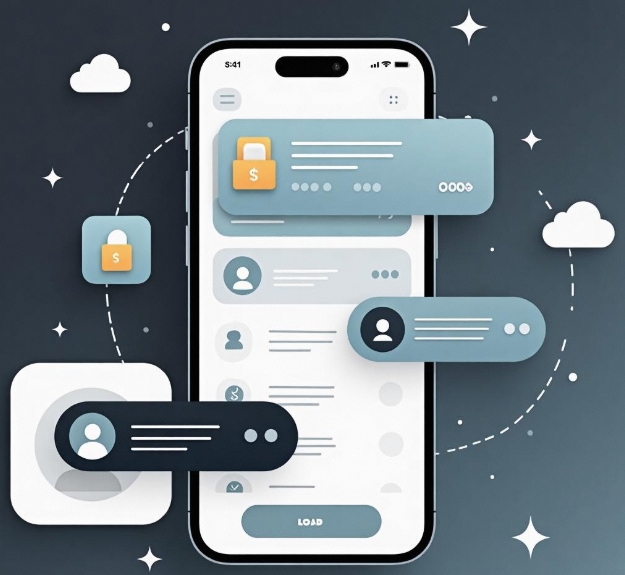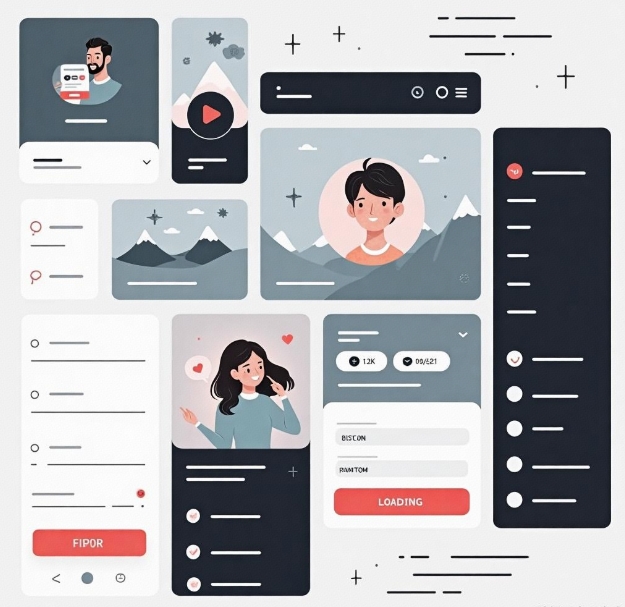Selection of UI Components and Functional Modules in Mini-Program Development
- latest articles
- 1.DApp Development & Customization: Merging Diverse Market Needs with User Experience 2.Analysis of the Core Technical System in DApp Project Development 3.How to achieve cross-chain interoperability in Web3 projects? 4.How does the tokenization of points reconstruct the e-commerce ecosystem? 5.How to Set and Track Data Metrics for a Points Mall? 6.What is DApp Development? Core Concepts and Technical Analysis 7.Inventory of commonly used Web3 development tools and usage tips 8.Development of a Distribution System Integrated with Social E-commerce 9.Six Key Steps for Businesses to Build a Points Mall System 10.What is DApp Development? A Comprehensive Guide from Concept to Implementation
- Popular Articles
- 1.Future Trends and Technology Predictions for APP Development in 2025 2.Analysis of the DeFi Ecosystem: How Developers Can Participate in Decentralized Finance Innovation 3.From Zero to One: How PI Mall Revolutionizes the Traditional E-commerce Model 4.DAPP Development | Best Practices for Professional Customization and Rapid Launch 5.Recommended by the Web3 developer community: the most noteworthy forums and resources 6.How to Develop a Successful Douyin Mini Program: Technical Architecture and Best Practices 7.From Cloud Computing to Computing Power Leasing: Building a Flexible and Scalable Computing Resource Platform 8.Shared Bike System APP: The Convenient Choice in the Era of Smart Travel 9.How to Create a Successful Dating App: From Needs Analysis to User Experience Design 10.From Design to Development: The Complete Process of Bringing an APP Idea to Life
In the development of modern mobile internet applications, mini-programs have gained widespread attention due to their lightweight and convenient characteristics. Particularly with the popularity of platforms like WeChat and Alipay, the demand for mini-programs among developers is increasing daily. However, during the development process, the selection of UI components and functional modules is especially important, as it not only directly affects the user experience but also determines the maintainability and scalability of the mini-program. Therefore, this article will delve into the selection of UI components and functional modules in mini-program development to help developers make more informed decisions.
I. Selection and Design of UI Components
The UI (User Interface) serves as the bridge for user interaction with the mini-program. Therefore, during development, UI design must not only be aesthetically pleasing but also focus on practicality and interactivity. A good UI component can enhance the user experience, making users more satisfied while using the mini-program.
1. Common UI Components
UI components in mini-programs typically include buttons, input fields, images, lists, navigation bars, etc. Below are some common UI components and their characteristics:
Button: Buttons are one of the most common UI elements. They are typically used for submitting forms, triggering actions, etc. Developers should choose the size, color, and style of buttons based on functional requirements to ensure they attract user attention without being overly intrusive.
Input Field: Input fields are used to receive text input from users and are widely applied in scenarios such as login, search, and form filling. When selecting input fields, developers need to consider user input habits and appropriately set placeholders, hint text, and validation rules to improve the accuracy and efficiency of user input.
List: List components are mainly used to display data items and support features like scrolling and pagination. When designing lists, developers should focus on layout and formatting to ensure information is displayed clearly and without clutter.
Image: Images are commonly used to display products, avatars, backgrounds, etc. When selecting image components, developers need to pay attention to image dimensions, loading speed, and display performance under different network conditions.
2. Criteria for Selecting UI Components
When selecting UI components, developers need to consider the following criteria comprehensively:
Functional Requirements: Different mini-program functional requirements directly determine the selection of UI components. For example, an e-commerce mini-program requires product display components, while a social mini-program needs more message notification components.
User Experience: The design of UI components should consider user habits and operational logic. For instance, button sizes should be suitable for user clicks, and input fields should have clear hint information to prevent user errors.
Platform Compatibility: Since mini-programs often need to run on different operating systems and devices, developers must consider the cross-platform compatibility of UI components. For example, when using component libraries, choose frameworks and tools that are compatible with various platforms.
Performance Requirements: The design and implementation of UI components should take performance into account, avoiding overly complex animations or large image files that could slow down the mini-program's loading speed.
3. Selection of UI Component Libraries
Developers often use third-party UI component libraries to speed up the development process. Common UI component libraries include:
WeUI: WeUI is an official UI component library launched by WeChat, specifically designed for WeChat mini-programs. It follows WeChat's design language, ensuring the mini-program's UI interface aligns with WeChat's overall style.
Vant Weapp: Vant Weapp is a UI component library introduced by the Youzan team, suitable for WeChat mini-programs. It provides a rich set of components that meet most development needs.
Taro UI: Taro UI is the official UI component library of the Taro framework, suitable for multi-platform development. It supports multiple platforms such as WeChat mini-programs, H5, and React Native, allowing developers to achieve cross-platform deployment with unified code.
II. Selection and Implementation of Functional Modules
The design and implementation of functional modules are core aspects of mini-program development. The selection of functional modules directly impacts the performance and scalability of the mini-program. Developers need to choose and develop appropriate functional modules based on project requirements.
1. Common Functional Modules
Functional modules in mini-programs can be categorized into various types based on different application scenarios. Below are some common functional modules and their characteristics:
User Authentication Module: This module is used to implement user registration, login, identity verification, etc. Developers can use WeChat's authorization login interface to simplify the user login process and enhance the user experience.
Payment Module: The payment module is essential for e-commerce and service-oriented mini-programs. The mini-program payment interface supports WeChat Pay, and developers need to configure the corresponding payment settings in the mini-program backend.
Message Push Module: The message push module is used to send information to users. Developers can use WeChat's template message feature to send notifications to users on a scheduled or real-time basis.
Data Storage Module: The data storage module in mini-programs is used to store user data, application data, etc. Developers can utilize the cloud development features provided by WeChat mini-programs for cloud data storage, ensuring data security and reliability.
2. Criteria for Selecting Functional Modules
The selection of functional modules should consider the following criteria:
Business Requirements: Functional modules must meet the core business requirements of the mini-program. For example, e-commerce mini-programs require payment functionality, while social mini-programs need chat and push notification features.
Technical Difficulty: Developers need to assess the implementation difficulty of each functional module, choosing those with relatively mature technical solutions and shorter development cycles to avoid project delays.
Security and Privacy Protection: Functional modules in mini-programs must comply with relevant laws and regulations, especially those involving user privacy and data security. Developers should strictly adhere to data protection requirements.
Scalability and Maintainability: Selected functional modules should have good scalability and maintainability. Developers should avoid over-reliance on third-party plugins to ensure code controllability.
3. Common Third-Party Functional Module Libraries
To accelerate the development process, developers often choose some third-party functional module libraries. Below are a few common ones:
Tencent Cloud Development (CloudBase): Tencent Cloud Development provides powerful cloud services for mini-programs, including cloud functions, databases, storage, etc. Developers can use these services to quickly build backend functionalities for mini-programs.
Alibaba Cloud Mini-Program Solution: Alibaba Cloud offers a comprehensive mini-program solution, including cloud databases, cloud communication, cloud storage, etc., suitable for projects requiring large-scale data storage and high-concurrency processing.
Qiniu Cloud Storage: Qiniu Cloud provides high-quality cloud storage services, helping developers efficiently manage resources such as images, audio, and videos in mini-programs.
III. Integration of UI Components and Functional Modules
In the mini-program development process, UI components and functional modules are inseparable; they need to be closely integrated to achieve a high-quality user experience.
Collaborative Design of UI and Functionality: The design of UI components and functional modules should be approached holistically to ensure visual and functional consistency. For example, the UI design of the payment module should be simple and clear, ensuring users can complete payment operations quickly without confusion.
Optimizing User Experience: Developers need to focus on the collaborative optimization of UI and functionality, avoiding overly complex UIs that make functions difficult to use or overly complicated functions that affect UI clarity.
Performance Optimization: In development, the complexity of UI components and the functionality of modules can impact the mini-program's performance. Developers should reduce redundant UI elements, optimize the execution efficiency of functional modules, and avoid slow loading or lagging issues.
Conclusion
In the mini-program development process, the selection of UI components and functional modules is crucial, as they directly impact the user experience, performance, and future maintenance of the mini-program. By reasonably selecting and designing UI components and functional modules, developers can effectively enhance the quality of the mini-program and meet user needs. We hope this article provides valuable insights for developers, helping them make wiser decisions during development.
-

How to Increase User Stickiness and Activity Through Mini Program Development
With the development of the internet and mobile internet, mini-programs, as an e···
-

How can mini-program development assist in corporate marketing and e-commerce transformation?
In today's rapidly evolving mobile internet landscape, corporate marketing and e···
-

Offline Functionality Design and Data Synchronization in Mini-Program Development
With the rapid development of mobile internet, mini-programs, as a lightweight a···

 Blockchain
Blockchain












